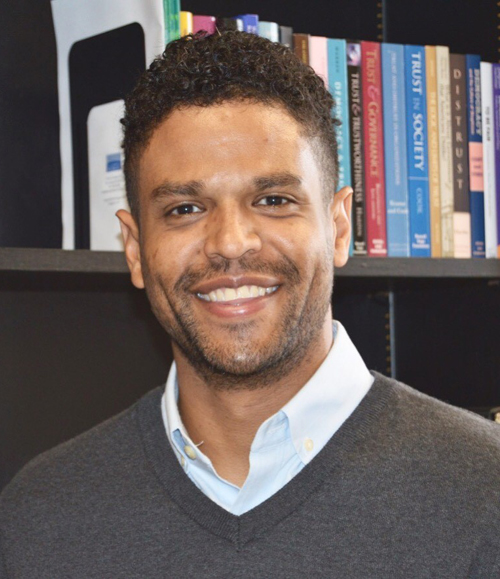Understanding police trustworthiness: how communities perceive vulnerability to harm
May 5, 2021 - Liz Schondelmayer
From the 2020 police killings of George Floyd and Breonna Taylor to the recent deaths of Daunte Wright and Adam Toledo, a 13-year-old child, the potential for police-caused harm plays an important role in understanding trust between law enforcement and the communities they serve.
 Associate Professor Joe Hamm (pictured left) in the Michigan State University School of Criminal Justice, led a team of researchers in a series of studies that shed light on this lack of trust, by exploring how the public perceives its potential for harm from the police. One of these studies recently published in the journal of Criminal Justice and Behavior provides insight into how law enforcement agencies can restore public trust.
Associate Professor Joe Hamm (pictured left) in the Michigan State University School of Criminal Justice, led a team of researchers in a series of studies that shed light on this lack of trust, by exploring how the public perceives its potential for harm from the police. One of these studies recently published in the journal of Criminal Justice and Behavior provides insight into how law enforcement agencies can restore public trust.
Defining trust in the context of legitimacy and vulnerability
The research is part of a trilogy of studies that breaks down what it actually means to trust the police.
"Think of a trust fall - when you fall backwards, you hope the person behind you will catch you, but you accept there is a chance that they won't, and you may get hurt. Building trust in the police is about understanding specifically what harms their legitimacy to protect," said Hamm.
In the first paper, published in 2017, Hamm and fellow researchers Dr. Rick Trinkner, an assistant professor at Arizona State University, and James Carr, a PhD candidate at MSU, explored community perceptions of police legitimacy and found the public’s willingness to accept vulnerability to the police to be important for fostering cooperation and compliance.
The second study in the trilogy was also published this year in the British Journal of Criminology. In that research, a team of faculty from the MSU School of Criminal Justice asked participants to identify the qualities they would want to see in police officers in four specific situations that involved different kinds of potential harm from the police.
Participants were essentially asked to design the officer they would most want to interact with while, for example, being ticketed for speeding, being investigated as a potential thief, or after experiencing a burglary in their home. That study found that, despite some small differences, listening skills and competence were consistently among the most important traits.
Understanding perceived risks to mitigate distrust
In the most recent study, Dr. Hamm and Carr joined with Dr. Rosalind Searle, a professor at the University of Glasgow, and Dr. Louie Rivers, an associate professor at North Carolina State University, to find that for a community to truly trust the police, individuals must accept a certain level of vulnerability to police-inflicted harm. However, when communities feel that their vulnerability to police harm outweighs the benefits of police protection, their trust shrinks dramatically.
"At its core, trust is really about a willingness to accept vulnerability. It's a recognition that something you have faith in could potentially cause you harm," said Hamm.
Past research has found that communities of color often feel more suspicious and cynical of policing efforts and that these communities are more worried about specific harms like use of force. This study built on that work using a novel multidimensional approach to measuring public evaluations of the full gamut of potential harms.
Here the researchers focused on Black and Muslim communities, which they compared with majority communities, white and Christian respectively, as past research has shown that these communities often have very different relationships with the police.
"We found that Black and Muslim communities think very differently about their potential for harm from police,” said Hamm. "These groups tend to feel that they are more likely to immediately feel the impacts of police harm and that they have less control over whether they have to interact with the police."
"This highlights a need for law enforcement to be aware of these concerns when they engage with these communities and to take special care to signal that they understand and are worthy of being trusted.”
Hamm hopes that these studies will aid both police and activists seeking to improve police-community relations by providing clarity regarding both the vulnerabilities that the public feels and how to go about measuring them.
"When facing protests, police may respond by trying to solve a problem that isn't really what’s at the root of the demonstration," said Hamm. "But if police can better understand the specific concerns at the heart of the unrest, they may have a better chance at addressing those problems and, hopefully, trustworthiness can be built much more effectively."

